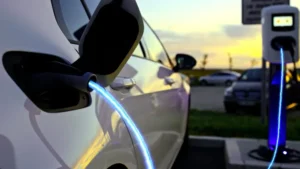How Energy-Efficient Solutions are Transforming Your Woodstock, GA Home
Introduction:
In today’s world, energy efficiency has become a critical consideration for homeowners in Woodstock, Georgia. With increasing energy costs and environmental concerns, finding innovative ways to transform waste into usable energy has gained significant attention. This article explores how energy-efficient solutions can revolutionize your home in Woodstock, GA, turning waste into watts and helping you save money while reducing your carbon footprint.
What is Energy Efficiency?
Energy efficiency refers to the ability to achieve the same or higher level of output while using less energy. It involves adopting technologies, practices, and systems that minimize energy waste and maximize energy conservation. By employing energy-efficient solutions, homeowners can significantly reduce their energy consumption without compromising on comfort, productivity, or convenience.
Key Benefits of Energy-Efficient Solutions
- Environmental Impact: Embracing energy-efficient solutions enables homeowners to contribute to a greener future. By reducing energy consumption, homes emit fewer greenhouse gases and help combat climate change. Energy efficiency plays a vital role in achieving sustainability goals and preserving our planet for future generations.
- Cost Savings: Energy-efficient solutions translate into significant cost savings for homeowners. By minimizing energy waste, households can lower their utility bills over time. Moreover, investing in energy-efficient upgrades often results in long-term financial benefits, as the reduced energy consumption leads to lower maintenance and operational costs.
- Improved Indoor Environment Quality: Energy-efficient solutions not only conserve energy but also enhance the quality of the indoor environment. By incorporating efficient lighting, heating, ventilation, and air conditioning (HVAC) systems, homeowners can enjoy better air quality, temperature control, and overall comfort. This contributes to a healthier and more pleasant living environment.
The Significance of Energy Efficiency: Statistics and Facts
- According to the United States Environmental Protection Agency (EPA), residential buildings account for approximately 20% of the country’s total energy consumption.
- The Department of Energy states that implementing energy-efficient practices can reduce residential energy bills by up to 30%.
- The International Energy Agency (IEA) estimates that energy efficiency measures implemented worldwide between 2000 and 2019 have resulted in an energy savings equivalent to the total energy consumption of China and India combined.
- The American Council for an Energy-Efficient Economy (ACEEE) asserts that energy-efficient improvements in homes can increase their value by up to 10%.
- The World Green Building Council reports that energy-efficient buildings experience lower vacancy rates and higher rental premiums, making them more attractive to tenants and investors.
By understanding the concept of energy efficiency and recognizing its key benefits, homeowners can make informed decisions to transform their homes into energy-efficient havens. In the following sections, we will explore specific areas where energy-efficient solutions can be implemented, such as lighting, HVAC systems, insulation, smart home technology, renewable energy integration, and more.
Solar Power: A Renewable Energy Revolution
Harnessing the power of the sun through solar panels is an excellent way to generate clean and renewable energy for your Woodstock, GA home. By installing solar panels on your roof, you can convert sunlight into electricity, significantly reducing your dependence on traditional energy sources. Solar power not only helps you save on your utility bills but also contributes to a greener, more sustainable environment.
Energy-Efficient Appliances: Powering Smarter Choices
Upgrading to energy-efficient appliances is another effective method to transform your home. Modern appliances, such as refrigerators, air conditioners, and washing machines, are designed with energy-saving features that consume less power without compromising performance. By replacing old, inefficient appliances with their energy-efficient counterparts, you can significantly reduce your energy consumption and save money over time.
Introduction to Energy-Efficient Lighting Options
- LED Lighting: Light Emitting Diode (LED) bulbs are highly energy-efficient and have revolutionized the lighting industry. They use up to 75% less energy than traditional incandescent bulbs and have a longer lifespan, making them a cost-effective choice.
- Compact Fluorescent Lamps (CFLs): CFLs are another popular energy-efficient lighting option. They use about 75% less energy and last up to ten times longer than incandescent bulbs. CFLs are suitable for various lighting fixtures and offer a range of color temperatures.
- Halogen Incandescent Bulbs: Halogen incandescent bulbs are more efficient than traditional incandescent bulbs, offering energy savings of around 25%. They provide a similar warm, natural light but have a longer lifespan.
Benefits of Using Energy-Efficient Light Bulbs
- Reduced Energy Consumption: Energy-efficient light bulbs consume significantly less energy than traditional bulbs, resulting in immediate energy savings and lower electricity bills.
- Longer Lifespan: Energy-efficient bulbs, such as LED and CFLs, have a longer lifespan than traditional bulbs. This reduces the frequency of bulb replacements, saving both time and money.
- Cost Savings: By reducing energy consumption, energy-efficient lighting solutions lead to substantial cost savings over time. The initial investment in energy-efficient bulbs is quickly offset by long-term energy savings.
- Environmental Impact: Energy-efficient lighting options have a reduced environmental impact due to lower energy consumption. They contribute to greenhouse gas reduction, helping combat climate change.
Tips for Choosing and Installing Energy-Efficient Lighting
- Consider Lumens Instead of Watts: Focus on lumens, which measure the brightness of the bulb, rather than watts, which indicate energy consumption. Energy-efficient bulbs can produce the same level of brightness while consuming fewer watts.
- Choose the Right Color Temperature: Different light bulbs offer various color temperatures, ranging from warm to cool. Consider the ambiance you want to create in each room and select bulbs with the appropriate color temperature.
- Use Dimmer Switches: Dimmer switches allow you to adjust the brightness of your lighting, providing flexibility and energy savings. However, ensure that the bulbs you choose are compatible with dimmer switches.
- Consider Motion Sensors and Timers: Install motion sensors or timers in areas where lighting is frequently left on unnecessarily. These devices automatically turn off lights when no one is present, optimizing energy usage.
- Properly Dispose of Bulbs: Energy-efficient bulbs contain small amounts of mercury, so it’s important to dispose of them properly. Check with local recycling facilities or retailers for recycling options.
Smart Home Automation: Intelligent Energy Management
Integrating smart home automation systems into your Woodstock residence can revolutionize the way you use and manage energy. These systems allow you to control lighting, heating, cooling, and other appliances remotely, optimizing energy usage based on your preferences and occupancy patterns. By automating your home’s energy management, you can avoid wastage and ensure that energy is only utilized when needed, ultimately reducing your carbon footprint.
Energy Recovery Ventilation: Breathing Fresh and Efficient Air
Implementing energy recovery systems is an innovative way to transform waste into usable energy. Technologies like waste heat recovery and geothermal heat pumps can capture and reuse waste heat generated by various processes in your home. For instance, waste heat from HVAC systems or hot water can be recycled and utilized for heating purposes, resulting in significant energy savings and a more efficient home.
Overview of Energy-Efficient HVAC Systems
- High-Efficiency Furnaces: High-efficiency furnaces use advanced technologies to convert fuel into heat more efficiently, resulting in significant energy savings. They achieve higher Annual Fuel Utilization Efficiency (AFUE) ratings, which indicate the percentage of fuel that is converted into usable heat.
- Heat Pumps: Heat pumps are versatile systems that provide both heating and cooling capabilities. They extract heat from the air or ground to warm the home in winter and reverse the process to cool it in summer. Energy-efficient heat pumps offer improved efficiency and can reduce energy consumption compared to traditional heating and cooling systems.
- Ductless Mini-Split Systems: Ductless mini-split systems are an alternative to traditional HVAC systems that require ductwork. These systems consist of an outdoor unit and one or more indoor units that deliver conditioned air directly to specific zones. They offer energy-efficient operation, allowing homeowners to adjust temperature settings for individual rooms or zones.
Advantages of Upgrading to Energy-Efficient HVAC Systems
- Energy Savings: Energy-efficient HVAC systems consume less energy, resulting in reduced utility bills. By upgrading to these systems, homeowners can potentially save a significant amount of money on heating and cooling costs.
- Improved Comfort: Energy-efficient HVAC systems provide more precise temperature control and enhanced humidity management. They distribute conditioned air more evenly throughout the home, ensuring consistent comfort in every room.
- Environmental Impact: Energy-efficient HVAC systems reduce greenhouse gas emissions by consuming less energy. By lowering carbon footprint, homeowners can contribute to environmental sustainability and help combat climate change.
- Enhanced Performance and Durability: Energy-efficient HVAC systems often come with advanced features and technology that improve overall performance and reliability. They are designed to operate efficiently and provide long-lasting comfort.
Factors to Consider When Selecting Energy-Efficient HVAC Systems
- Energy Efficiency Ratings: Look for systems with high Energy Efficiency Ratio (EER) for cooling and high AFUE ratings for heating. These ratings indicate the system’s efficiency in converting energy into cooling or heating output.
- Proper Sizing: Ensure that the HVAC system is sized correctly for your home. Undersized or oversized systems can lead to inefficiency, discomfort, and increased energy consumption. Consult with HVAC professionals to determine the appropriate size for your home.
- Maintenance Requirements: Consider the maintenance needs of the HVAC system. Regular maintenance, such as cleaning filters and inspecting components, is crucial to ensure optimal performance and energy efficiency.
- Smart Thermostat Compatibility: Check if the HVAC system is compatible with smart thermostats. Smart thermostats offer advanced programming features, remote control options, and energy-saving capabilities that further enhance efficiency.
Insulation and Energy-Efficient Windows: Keeping the Elements at Bay
Proper insulation and energy-efficient windows play a crucial role in reducing energy loss in your Woodstock, GA home. Well-insulated walls, roofs, and floors help maintain a consistent indoor temperature, reducing the need for excessive heating or cooling. Energy-efficient windows with low-emissivity coatings can minimize heat transfer, improving thermal efficiency and reducing reliance on HVAC systems.
The Importance of Insulation and Weatherization
- Reduced Heat Transfer: Insulation acts as a barrier, minimizing the transfer of heat between the interior and exterior of a home. This helps maintain a comfortable indoor temperature and reduces the need for excessive heating or cooling, resulting in energy savings.
- Improved Energy Efficiency: Insulation and weatherization improve the overall energy efficiency of a home by reducing energy waste. By sealing air leaks, minimizing drafts, and enhancing insulation, homeowners can optimize the performance of heating and cooling systems, leading to lower energy consumption.
- Enhanced Indoor Comfort: Proper insulation and weatherization contribute to a more comfortable indoor environment. They help regulate indoor temperature, reduce temperature fluctuations, and minimize drafts, creating a cozy living space.
- Moisture and Condensation Control: Insulation and weatherization techniques can help control moisture and condensation issues. By preventing air leaks and providing adequate insulation, homeowners can reduce the risk of mold growth, moisture damage, and related health issues.
Key Areas for Insulation and Weatherization Improvement
- Attic Insulation: Attics are a significant source of heat loss or gain in homes. Properly insulating the attic helps prevent energy loss, maintain indoor temperature, and reduce the workload on heating and cooling systems.
- Wall Insulation: Insulating exterior walls improves thermal efficiency and reduces heat transfer. This helps create a more comfortable living environment and enhances energy savings.
- Crawl Space and Basement Insulation: Insulating crawl spaces and basements prevents cold air infiltration and moisture issues. It helps maintain a more consistent temperature throughout the home and protects against potential damage.
- Air Sealing: Identifying and sealing air leaks around doors, windows, electrical outlets, and other openings is crucial for preventing drafts and heat loss. Proper air sealing enhances energy efficiency and improves indoor comfort.
- Weatherstripping and Caulking: Applying weatherstripping and caulking around doors and windows helps eliminate drafts and prevent air leakage. It ensures a tight seal and enhances the overall insulation of the home.
Tips for Effective Insulation and Weatherization
- Consult with Professionals: Consider consulting with insulation and weatherization experts to assess your home’s needs and recommend appropriate insulation materials and techniques.
- Choose Proper Insulation Materials: Select insulation materials suitable for the specific areas of your home, such as fiberglass batts, cellulose, spray foam, or rigid foam boards. Ensure they meet the recommended R-value for optimal energy efficiency.
- Seal Air Leaks: Use weatherstripping, caulking, and foam sealants to seal gaps and cracks around doors, windows, and other areas where air leakage is common.
- Insulate Hot Water Pipes and HVAC Ducts: Insulating hot water pipes and HVAC ducts reduces heat loss during distribution, improving energy efficiency and ensuring hot water and conditioned air reach their destinations efficiently.
- Consider Energy Audits: Energy audits can identify areas of energy loss and help prioritize insulation and weatherization improvements. They provide valuable insights into your home’s energy performance.
Conclusion:
Energy-efficient solutions are transforming Woodstock, GA homes by leveraging innovative technologies to turn waste into watts. From harnessing solar power and upgrading appliances to implementing smart home automation and utilizing energy recovery systems, homeowners can enjoy the benefits of reduced energy consumption, lower utility bills, and a greener lifestyle. By adopting these energy-efficient solutions, you can make a positive impact on both your finances and the environment, ensuring a sustainable future for Woodstock and throughout Georgia.




